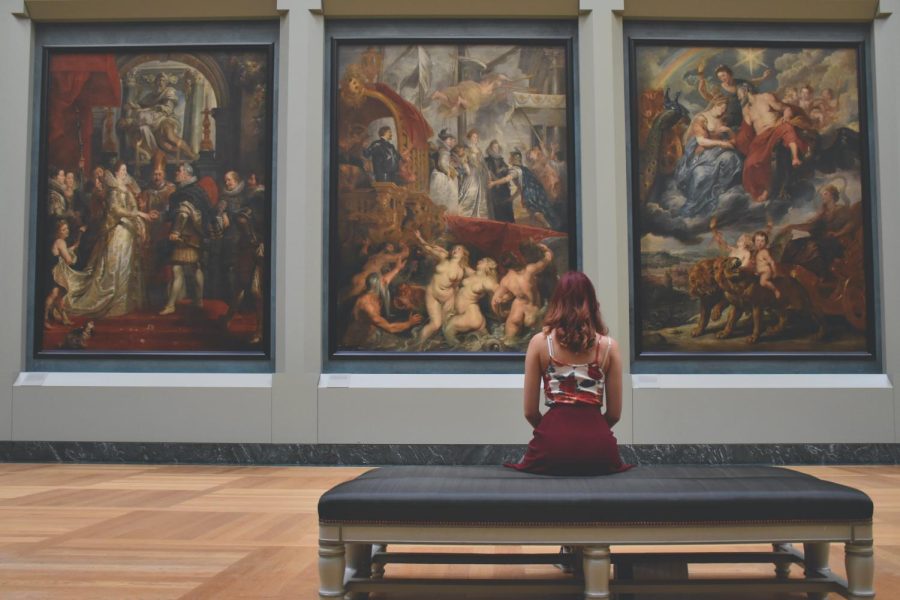“Art History” is more than just another credit
September 12, 2023
Nearly every family trip I’ve ever been on has included a visit to an art museum. Or two. Or ten. For years, my parents would drag my brother and I from one piece of modern art to the next, praising the artists’ “appreciation of the absurd” or “revolutionary simplicity.” To me, the works lacked the genius that my parents and other museumgoers attributed to them — they seemed unimpressive, boring or simply ugly.
With time, however, I opened up to the possibility that seemingly simplistic art has more to offer than meets the eye. Although I was still unable to figure out why these pieces left people so enticed, I was willing to admit that my own stubborn attitude could be to blame. In an attempt to become more open-minded, I decided to sign up for AP Art History my sophomore year.
Going into the class, I had no idea what to expect. On the surface, it didn’t sound very appealing, a mostly lecture-based class with limited opportunity for group work or discussion. I worried the class would focus more on rote memorization than anything else. What that description left out was the entirely immersive nature of the lectures — they were as entertaining as they were informative, moving beyond mere facts about the art piece in question into discussions of the artists’ cultures and ways of life.
The classes’ most important lessons emerged slowly, as we tracked the thematic strands that connected the pieces we studied. Traversing many centuries and thousands of miles, we consistently saw that artists in different contexts often approached the same concepts through their art: wealth and power, pain and suffering, and sexuality and gender, to name a few. By making these connections, I found myself able to tap into the emotions that had informed pieces from times and places that had previously seemed completely inaccessible.
Beyond identifying similarities, viewing how art changed under different social climates provided me a window into history. We saw art that served as satire and commentary, art that served as a political tool, and even art made solely for the sake of making art. Contrary to the over-wrought themes of modern art that had bothered me so much in the past, I was finally able to look at pieces that had no theme at all. They existed simply because they brought people joy, and I now appreciate why.
AP Art History made me question my preconceptions, and even instilled in me a reluctant appreciation for modern art. Although I maintain that some modern art is vapid, having a comprehensive grasp of the origins and traditions that dictate today’s art world has allowed me to view pieces more holistically. Without knowing the artistic principles and traditions the works referenced and manipulated, they felt jarring. However, with the necessary context, I’ve realized that many are considerably more thoughtful and substantive than I initially gave them credit for.
As fine arts and humanities classes begin this fall, no matter the medium, don’t be afraid to let them change your worldview. You might find yourself referencing what you learn for years to come — whether walking through a museum or down a school hall.








